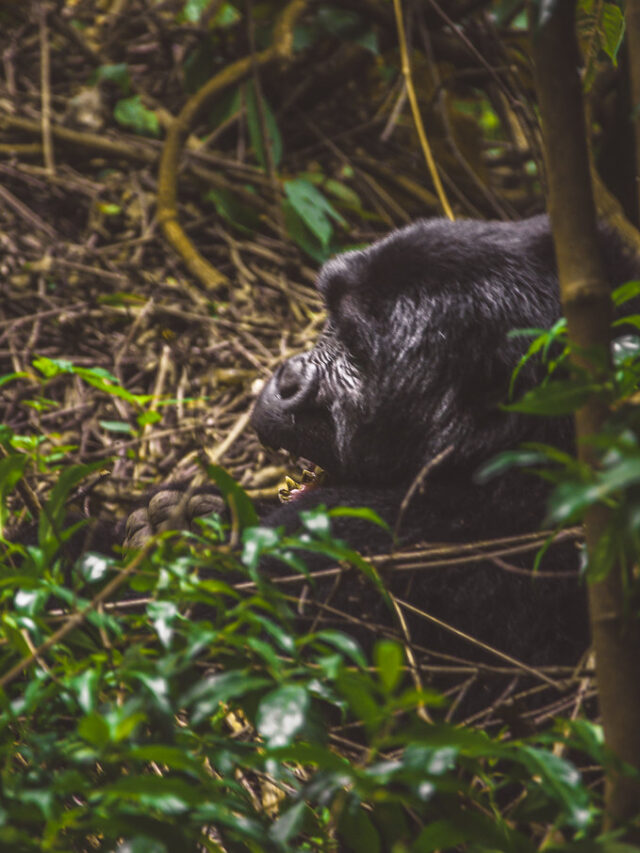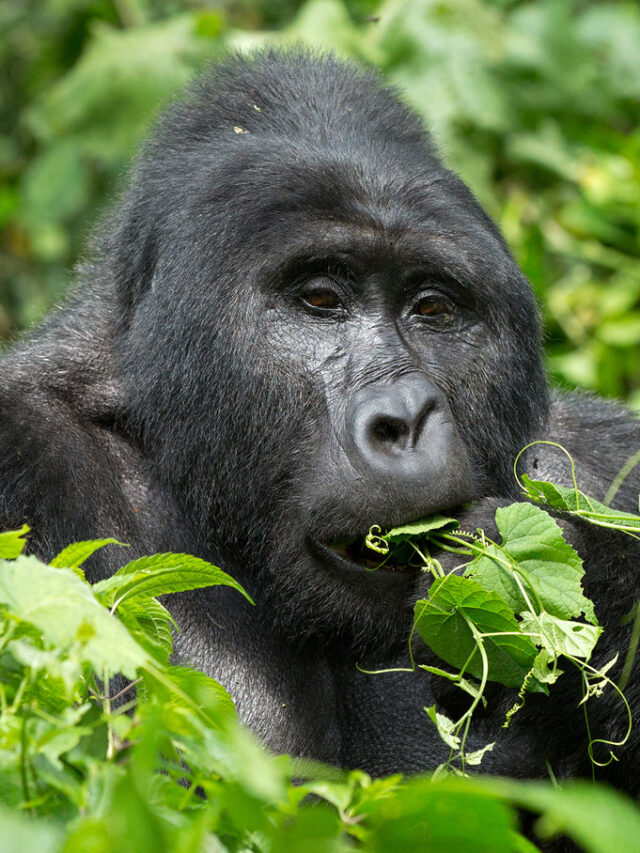Blackback vs. Silverback Gorilla: The Journey from Strength to Leadership
Not Rivals, But Stages in a Remarkable Life Cycle of Power, Growth, and Purpose
In the lush heartlands of Central and East Africa—where the rainforest breathes with ancient life and the mist clings to the canopy like memory—two powerful male gorillas move through the undergrowth. One walks in the shadow of the other. He is strong, dark, and young, but his back is still black. The other leads with calm authority, broad and silver-backed, his presence commanding every eye around him. These two figures are not enemies. They are two phases of the same story: the blackback and the silverback gorilla.
To understand the difference between a blackback and a silverback is to understand the journey of a male gorilla as he transitions from adolescence to leadership—from power to purpose.
The Blackback Gorilla: Strength on the Rise
A blackback gorilla is a sexually mature male, typically between the ages of 8 to 12 years old, who has not yet developed the distinctive silver saddle of hair on his back. He is physically imposing already—taller and stronger than any female—but not yet a leader, nor ready to challenge a dominant male. His muscles are building, his instincts sharpening, and his role within the group is one of observation, support, and restraint.
Blackbacks often serve as helpers in the group, especially in larger families where multiple males coexist. They help protect the group, especially during movement or when younger members get rowdy. They are known to play with juveniles, imitate the silverback’s chest-beating behavior, and begin exploring their place in the social hierarchy.
Though they may appear calm, blackbacks are constantly absorbing, learning the patterns of leadership, group control, and emotional intelligence from the silverback they follow.
The Silverback Gorilla: The Reign of Wisdom and Command
Once a blackback reaches around 12 to 13 years old, he begins to transform. The thick silver-grey hair that appears along his back is not just a cosmetic change—it marks the transition into dominance, adulthood, and authority. The silverback is now the alpha, the leader of the group, often referred to as a troop.
He controls everything: daily travel routes, feeding grounds, nesting spots, discipline, protection, and even reproduction. Silverbacks carry immense physical strength—often up to 220 kilograms (485 pounds) with an arm span of more than 8 feet—but what sets them apart is how that strength is used. Not for chaos, but for stability, peacekeeping, and love.
Blackback vs. Silverback Gorilla — Where the blackback is strength-in-training, the silverback is strength realized—and restrained.
Blackback vs. Silverback: The Key Differences
1. Physical Appearance
The most visible difference lies in the color and size. Silverbacks have a wide saddle of grey or silver fur across their backs and hips—signaling maturity. They’re also heavier, broader, and more muscular than blackbacks. Their heads are larger with a more pronounced sagittal crest, allowing for stronger jaw muscles.
Blackbacks, though strong and tall, are less bulky, without the silver coloring, and often have a more upright, sleek posture.
2. Social Rank and Responsibility
A blackback has no leadership role—he defers to the silverback and does not mate with females in the troop. His main role is to stay within the group and grow.
The silverback is the undisputed leader—the decision-maker, protector, father, and emotional center of the group. He has exclusive breeding rights, and the troop revolves around his decisions and behavior.
3. Behavior and Temperament
Blackbacks are more playful and curious, often involved in roughhousing with younger members. They may occasionally test boundaries but rarely challenge the alpha unless they’re ready to leave.
Silverbacks are calm, dominant, and focused. They don’t play—they watch, guard, and lead. Their gestures are purposeful. Their emotions, though not always visible, are deep. They are quick to act when needed and act with experience rather than impulse.
4. Life Path
Not every blackback becomes a silverback. Some leave their natal group and become solitary males, wandering for years until they attract females and form a new troop. Others may remain as subordinate males in a large group. A select few may challenge a dominant silverback and take over a troop, either by strength or patience.
Once a gorilla becomes a silverback, his life becomes about service, survival, and succession.
Is There Ever Conflict Between Them?
Yes—but not always. In most peaceful troops, a blackback respects the hierarchy and avoids direct challenge. However, in some situations—especially when the dominant silverback is aging or weak—blackbacks may attempt to take over the troop. These confrontations are rare and usually settled with intimidation displays like chest-beating or bluff charges, though serious fights can occur.
In other cases, especially in large or multi-male troops, the blackback may coexist with the silverback peacefully, provided he doesn’t attempt to breed or challenge leadership.














